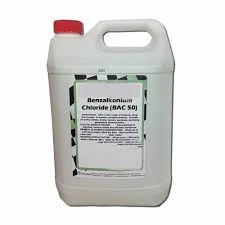coagulant and flocculant chemicals
Coagulant and Flocculant Chemicals Key Components in Water Treatment
In the realm of water treatment, coagulant and flocculant chemicals play an essential role in the purification process. As global awareness of water quality and environmental sustainability increases, the importance of these chemicals in various industrial applications cannot be overstated. This article delves into the nature of coagulants and flocculants, their mechanisms of action, and their significance in ensuring safe and clean water.
Understanding Coagulants
Coagulants are substances that promote the aggregation of small particles suspended in water into larger clusters, or 'flocs.' This process, known as coagulation, typically occurs when coagulants are added to water that contains dispersed particles such as silt, clay, and organic matter. The most commonly used coagulants are aluminum sulfate (alum), ferric chloride, and polyaluminum chloride (PAC).
When coagulants are added to water, they neutralize the electrical charges that keep the fine particles suspended. This neutralization causes the particles to come together, forming larger aggregates due to Van der Waals forces. The larger flocs are then easier to remove from the water through sedimentation or filtration processes.
The Role of Flocculants
Flocculants complement the action of coagulants by facilitating the aggregation process and stabilizing the resultant flocs. They are typically high-molecular-weight polymers that can either be organic or inorganic in nature. Common examples include polyacrylamide and cationic starches.
The primary function of flocculants is to enhance the settling velocity of the flocs formed during coagulation. They achieve this by bridging the spaces between different floc particles, thus increasing their overall size and weight. In addition, flocculants can help create a denser network of floc, promoting efficient sedimentation and reducing the time required for clarification.
coagulant and flocculant chemicals

Application in Water Treatment
The combination of coagulants and flocculants is widely used in various fields, including municipal water treatment, wastewater treatment, and industrial processes. Municipal water treatment facilities utilize these chemicals to remove impurities from drinking water, ensuring that it meets safety standards. Similarly, in wastewater treatment, they aid in the effective removal of suspended solids and pollutants before discharge or recycling.
In industrial applications, such as mining, paper production, and food processing, coagulants and flocculants are crucial for the management of wastewater. They help in recovering valuable materials from waste streams, facilitating processes such as dewatering and recovery of solid residues.
Environmental Considerations
While coagulant and flocculant chemicals are vital for water treatment, their use also comes with environmental considerations. The selection of the appropriate chemicals is essential to minimize adverse effects on aquatic ecosystems. Biodegradable or less toxic alternatives are being actively researched and developed, ensuring that treatment processes do not inadvertently harm the environment.
Moreover, the responsible management of residual sludge, often rich in contaminants, poses a significant challenge. Modern water treatment facilities are adopting innovative techniques to treat and repurpose sludge, thus enabling a more sustainable approach.
Conclusion
Coagulant and flocculant chemicals are indispensable tools in the field of water treatment, playing a crucial role in ensuring water quality and safety. As technological advancements continue, the focus on efficiency, sustainability, and environmental impact will shape the future development and application of these substances. The ongoing research into environmentally-friendly alternatives further highlights the industry's commitment to protecting our precious water resources while meeting global demands. Understanding the importance and application of these chemicals will be vital as we strive for improved water quality in an age of increasing environmental awareness.
-
Water Treatment with Flocculant Water TreatmentNewsJun.12,2025
-
Polymaleic AnhydrideNewsJun.12,2025
-
Polyaspartic AcidNewsJun.12,2025
-
Enhance Industrial Processes with IsothiazolinonesNewsJun.12,2025
-
Enhance Industrial Processes with PBTCA SolutionsNewsJun.12,2025
-
Dodecyldimethylbenzylammonium Chloride SolutionsNewsJun.12,2025





